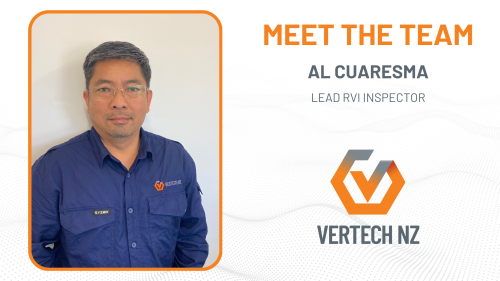Vertech have performed UAV Inspection surveys for valued clients on a number of projects, with particular expertise on Flare Tip Replacement (FTR) scopes.
Considered to be one of the most resourceful and multipurpose innovations of the century, UAV’s have managed to perforate numerous segments of the global economic sphere. The market for commercial drones continues to grow and shows no signs of slowing down anytime soon.
Vertech acknowledged early in the development of this market, that the technology was rapidly changing and early capital investment in the technology was going to be counterproductive with the evolution of the equipment progressing almost exponentially.
Our goal is always to provide our clients with the best equipment for inspection, therefore a management decision was made to ensure we were not backed into the corner of using sub-standard equipment for our UAV Inspections.
To provide the best service with the most up to date equipment Vertech has partnered on several occasions with Autonomous Technology for equipment solutions. Autonomous Technology are specialists in this field and as such are market leaders who continuously invest in R&D of their bespoke UAV systems using self-designed 3D printed parts.
As a part of Vertech’s goal to provide innovative access solutions, we can offer clients fully integrated UAV inspection solutions which include AICIP qualified pilots to ensure that inspection requirements are met in the most cost effective and safest manner possible. All of Vertech’s pilots are trained and certified by CASA and licensed to fly all multi-rotors under 7kg in weight.
FTR Project for a valued client
One of our recent UAV inspections was part of a Flare Tip Replacement project (FTR).
The project involved 2 trained (CASA) and experienced UAV operators. The UAV campaign was supervised, and inspection data reviewed by the clients construction engineer onsite.
Vertech have experience with working on Oil and Gas facilities, and as such, adopt controls to ensure potential risks associated with the operation of UAV’s in a hazardous environment are reduced to ALARP.
Dropped Object Prevention
A number of active and passive controls have to be put into place to mitigate the risk of dropped object to ALARP. These include:
- Pre-mobilisation system checks and test flight
- Pre-flight checks
- Only operating within CASA license conditions
- Using a proven and reliable aircraft with multiple redundancies
Potential ignition sources
There is not a UAV on the market currently which can claim to be Intrinsically Safe (IS). While our commonly used Industrial UAV is not IS, once the battery is connected (In a safe area out with the process environment), there is a negligible risk of a spark.
Controls in place to mitigate this risk include:
- Ensuring the battery is never inserted or removed in a potentially hazardous environment
- Monitoring and operating to weather conditions (mainly wind) to identify safe areas
- Placing and monitoring gas detectors near any process pipework or area of inspection
Flight Management Plan
The equipment was set up on the North East Corner on the Cellar deck. This provided a clear take off platform and line of site of the flare structure. Before flight commencement a pre-flight check took place to ensure all controls and communications systems were operational. Prior to commencement of a UAV flight, the central control room and radio room was notified and permission for flight granted, once all remote flight operations has been finalised, the facility radio room and central control room was notified all flight operations had ceased.
Outcome
This offshore survey was extended for 2 x 12 hour shifts due to wind conditions being significantly out with the UAV capabilities (35 knots).
When the wind conditions eased to 20 knots gusting to 30 knots, (incidentally this is pushing the upper boundaries even for industrial equipment), the survey was completed. Vertech’s faith in Autonomous Technology Equipment was well founded with the stability of the UAV in these conditions being exceptional.
Image & Video Technology and Specifications:
- Gyro stabilised camera mount, isolated mechanically from the drone – ensuring clear image with no motion blur.
- Image sensor size – Full frame 35mm (42MP max).
- Optical zoom – preferred and utilised when possible to ensure clearest possible image.
- Active image stabilisation – utilised to provide a steady clear image and video capture.
- 4K Video Recording – Enabled further zoom capabilities using post processing software.
- Variety of lens filters – Used to match lighting conditions and improve clarity.
Classification
Vertech have recently gained class accreditation with IACS (International Association of Classification Societies) member ABS (American Bureau of Shipping) for “remote inspection techniques: UAV inspection”.
This allows Vertech and the attending ABS Surveyor to inspect the internal structure of ballast/cargo tanks and external ship structure (including classed items such as helidecks, cranes, turret structure etc.) using UAV’s on vessels classed with ABS. Having access to this capability means that Vertech can develop the use of UAV’s whilst having complete accreditation to utilise the current technology with successfully audited safe work methods and QMS framework.
Currently, Vertech is the only company in Australasia to achieve this ABS “approved external specialist” accreditation.
For more information on how we can help and provide you with a UAV Inspection solution, please get in touch via the contact page.




